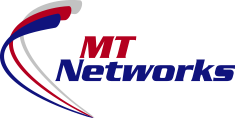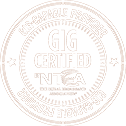The Cloud at Home: What Cloud Storage Means for Smart Homes
August 14, 2025
The Cloud at Home: What Cloud Storage Means for Smart Homes
You’ve probably heard the phrase “it’s stored in the cloud,” but if you’re not a tech professional, it might sound a little fuzzy (no pun intended). The truth is, the cloud is a vital part of how smart homes work today, and it affects everything from your WiFi-connected thermostat to your video doorbell.
At MT Networks, we know many of our customers are embracing smart home technology, including security systems, cameras, lights, or even smart refrigerators. That’s why we want to help break down what “cloud storage” really means for your smart home and how your home internet plays a key role in keeping everything running smoothly and securely.
What is the Cloud?
Think of the cloud like an external hard drive, but instead of plugging it into your computer, it’s connected to the internet. You can send and access files from it wherever you are, as long as you have an internet connection.
When you upload photos to Google Photos, store documents in Dropbox, or use iCloud with your iPhone, you’re using cloud storage.
Behind the scenes, all of those files are stored in physical buildings called data centers. These are facilities packed with computers and servers that store massive amounts of information (hundreds of terabytes or more). They’re protected by:
- Physical security (locked rooms, ID access, cameras)
- Software security (firewalls, encryption, authentication systems)
- Redundant backups in case something goes wrong (storm damage, power outages, hardware failure)
Big companies like Google, Amazon, and Microsoft all run large-scale cloud platforms, but many smart home brands use their own cloud servers, too.
How Does the Cloud Play into My Smart Home?
Now, to connect the dots: how does this relate to your smart home setup?
Every time you use a smart home device, it’s sending and receiving data over your internet connection. Even something as simple as turning on a smart light bulb involves the cloud:
- You open the app and tap the "on" button.
- That command gets sent (uploaded) from your device through your home’s internet connection to a data center.
- The data center receives the request, processes it, and sends a response (download) back to your light bulb.
- The bulb receives the signal and turns on.
All of this happens in a matter of seconds—or faster—depending on your internet speed.
Fiber internet from MT Networks is ideal for smart homes because it offers symmetrical speeds, meaning your upload and download speeds are equally fast.
That’s important because while most of us think about downloading in terms of things like streaming TV, uploading is just as crucial for smart devices that constantly send data out. With more and more devices in your home needing to communicate with cloud servers, like doorbells, cameras, smart speakers, and even vacuums, upload speed matters more than ever.
What Does That Mean for My Data?
This is where things get even more important. Every smart device connected to your home WiFi is collecting or transmitting some kind of data outside of your home network, such as:
- Security camera footage
- Smart vacuum maps of your home layout
- Voice commands from your smart assistant
- Sensor data from smart thermostats, locks, or motion detectors
All of that info gets stored in the cloud. While most of it seems harmless, it can become sensitive if it falls into the wrong hands. For example, video footage of your front door, or details about when your lights are usually on or off, can tell someone more about your routines than you’d think.
Choose Smart Devices with Security In Mind
We don’t want to scare you away from using smart home tech! It’s incredibly useful and fun. But, it’s important to choose products from companies that take your data seriously.
Brands like Philips Hue, TP-Link, Nest, and Govee have a solid reputation for protecting your privacy. They invest in secure servers, encrypted communication, and regular software updates.
On the other hand, ultra-cheap knockoff brands found online or in discount stores might not follow the same standards. If a low-quality device is poorly secured, it could become a “back door” into your home network, exposing other devices (like your phone, laptop, or smart TV) to security risks.
MT Network’s Expert Tips:
- Stick with name brands that are known and reviewed
- Look for devices that offer two-factor authentication
- Always install updates and check privacy settings
- Avoid using the same password across multiple smart home apps
Security in Your Home Network
Even with secure devices, your home WiFi is the gateway to all of your tech. That means the strength and security of your internet connection is just as important as the devices themselves.
If you’re running your smart home on slow or outdated internet, or if your network is unprotected, it can lead to:
- Lag or delay in smart device responses
- Disconnections or failed commands
- Security vulnerabilities that open the door to hackers or malware
That’s why MT Networks delivers fast, reliable fiber-powered internet with symmetrical speeds. It’s perfect for smart homes loaded with connected devices.
The Cloud at Home
Smart homes are no longer the future; they’re part of everyday life, and the cloud is what makes that connectivity possible. By understanding how your data flows from your device to the cloud and back, and why internet speed and security matter, you can make smarter choices about what you connect to your network and how you protect it.
For more tips on smart home technology, device security, or upgrading your home internet to meet today’s demands, follow us on our social media channels!



